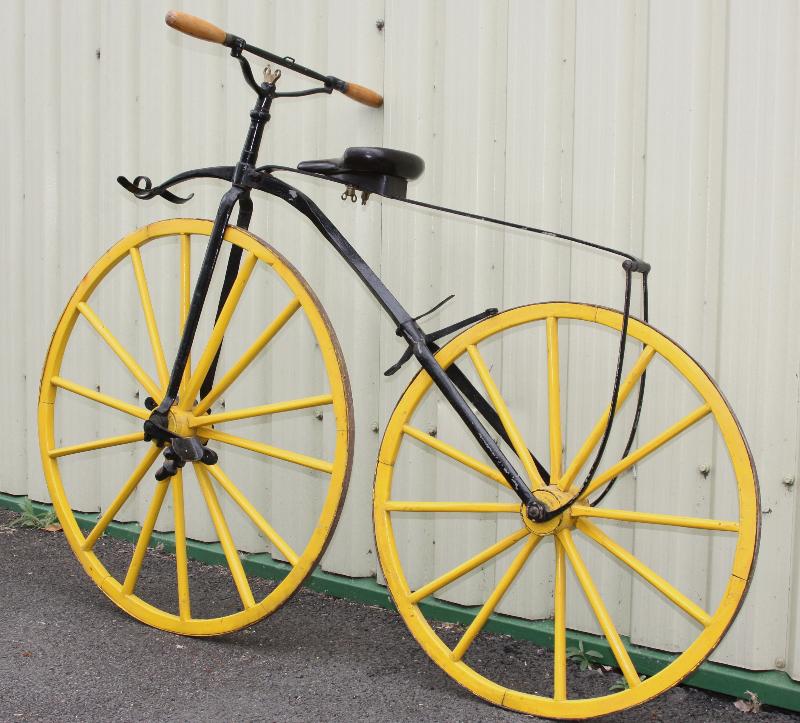1860 Boneshaker bicycle

What is it?
The bicycle was first invented in 1817. Riders used their feet to propel the machine forward and to stop it. They had wooden wheels like a cart, but no brakes, no pedals and no chains . Bicycles were neither popular nor common. In 1861 Michaux of Paris fitted cranks to the front wheel with pedals attached. Riders could now go faster without wearing out their shoes! However, the Boneshaker still had wooden wheels with wooden spokes. There were many accidents when riders free-wheeled downhill and got their feet trapped between the spokes. The problem was overcome by the addition of two foot rests in front of the handle bars. Thus riders would go downhill feet first! Early boneshakers still had no brakes so the rider had to pedal backwards to slow down or use their feet. Later Boneshakers did have a brake. This was operated by twisting the handlebars which tightened a cord which was attached to the brake on the back wheel. The shape of these brakes led them to be called 'Spoon' Brakes. They were made of metal and were applied against the metal rim of the wheel. Metal slips against metal, so the brake was never going to be as effective as the modern rubber brakes. The next development was metal spokes, which led to the high-wheeled Ordinary bicycle, which today we call the Penny Farthing after a large coin (the Penny) and a small coin (the farthing).




Where is it?

You can find it at Oxford Bus Museum
Just inside the bus museum entrance on the right. Other examples are in the Historic Cycle Collection on the first floor of the Morris Museum
When can I see it?
You can see this right now!
Can I collect it?
This item can't be collected at the moment but check back in the future!

